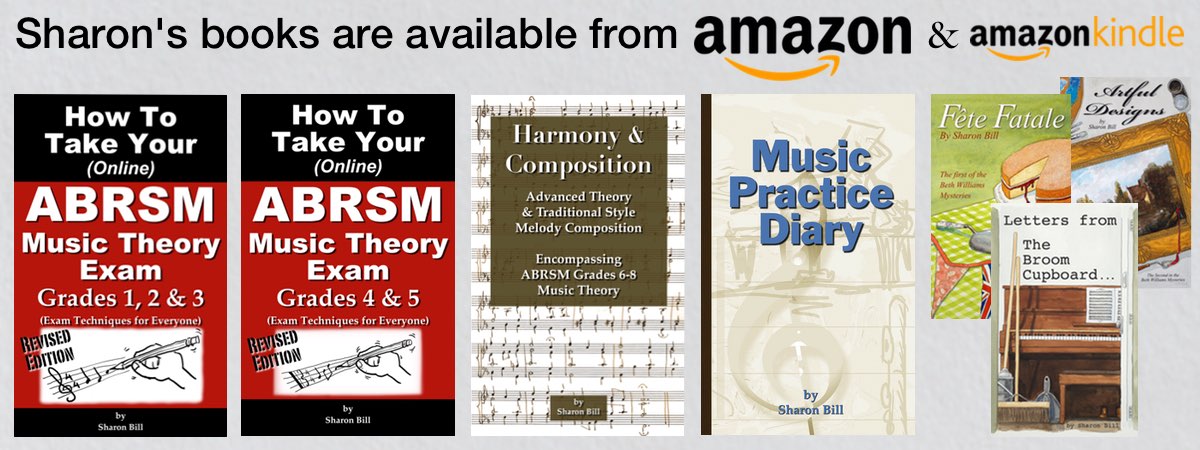The Piano - A Closer Look
25/04/15 22:25 Filed in: Newchapel News Articles | Music

As part of my private music tuition practice I write a quarterly article for a local parish magazine. Here is a piece I wrote some years ago explaining the history and basic mechanisms of the piano…
The piano actually belongs to the percussion family, because to sound a note it has to be struck - just as a drum skin is also struck. More accurately it belongs to the tuned percussion family because it involves pitch (high/low notes). Other instruments belonging to that group are instruments such as the glockenspiel, the xylophone, the vibraphone, the marimba and the tubular bells. The great thing about the piano is that the number of notes played is only restricted to the amount of fingers available to play them - so music written for four hands (a duet) is very full indeed.
The term piano is short for its full name, the pianoforte which literally means soft-loud. This is because it was the first keyboard instrument which could be played either softly, or loudly. Its predecessor, the harpsichord, achieved a note by a string being plucked which limited the volume in which a note could be sounded. Because the piano achieves a note by hammer action the strength with which the key was struck was reflected in the strength in which the hammer struck the strings, resulting in either a soft note or a loud one. Previously the harpsichord could only allow a note to sound for the amount of time in which one string could reverberate after being plucked and the mechanism only allowed one strength of pluck and so only one volume of playing. The fact that most of the notes on the piano have three strings (apart from the very thick singular bass string notes) and the ability to use the pedals can allow notes to be dampened or sustained.
Use of the left pedal is directed by the words Una Corda, meaning one string. When you press the left pedal a felt dampener touches two of the three strings only allowing one string to sound and the other two strings are restricted - as if you have lightly pressed your fingers onto a guitar string to dampen the vibration. This makes the overall volume quieter and also creates a slightly ‘wooly’ tone. When no pedals are in use the dampener board presses onto all the strings when a key is released preventing the string continuing to vibrate and sound. The right hand pedal is effectively a sustain pedal and in music is shown by either a bracket showing when to press and release, or just by the words Con Ped. (with pedal) to use at your own discretion. When this pedal is used the dampener board is no longer allowed to touch the strings to end the sound and the note is allowed to linger on as long as the string can vibrate for. A louder note would reverberate for longer than a quieter note purely because it has been struck harder. In effect this means that, until the pedal is released, all the sounds will continue and overlap - which can create quite an awful noise if not used properly. It is helpful though to create a very smooth performance and can hold notes down when the fingers can’t reach a jump.
The piano became the prominent domestic keyboard instrument in the Classical period (about 1750) and composers like Mozart and Haydn composed literally hundreds of Sonatas for it. Not much use was made of the pedals during this period, possibly until the mechanism was perfected and also because the classical style didn’t require them. Since then there hasn’t been a keyboard instrument to equal it until the modern electronic keyboard/synthesiser was created.
It is possible (to a point) to learn piano by practising on a keyboard, but nothing will ever be able to replace the hammer action and the weighted keys to enable tone and touch to convey musical meaning. Touch sensitive keys just don’t even come close. And of course, the pedals aren’t included in a modern keyboard. Electric pianos have come a long way and are excellent, though not quite the ‘real thing’. I eventually converted to an electric piano because of my acoustic piano needing constant tuning and I was very impressed that the manufacturers had even managed to incorporate the feeling of the strings vibrating up the keys on my fingers as I played. However, I was talking to a foreign piano student whose teacher forbade her to practise on an electric piano as it would ruin her sense of touch! So I guess every purist has their level. I notice though, that music Conservatoires do provide electric pianos to practise on - so I suppose it’s down to personal preference!





